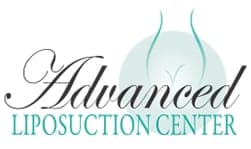How many times have you looked at your body in the mirror and thought, “If only I could take some fat from this area and put it on this part instead?” At Advanced Liposuction Center that is actually possible. The procedure is called a fat transfer. It is safe and effective, producing natural results that decrease body mass in one area for a leaner appearance and increases volume and plumps sagging skin due to aging, genetics, weight gain or loss in another part of your body. Below are some common questions patients ask:
Q: What’s the procedure for a fat transfer?
A: First, our expert cosmetic surgeons will use a technique called Body-Jet Liposuction to remove fat from your chosen area (abdomen, love handles, thighs are common locations) using pressurized water and gentle suction. The fat is emulsified while it is being extracted. It is then processed to remove dead fat cells and the good fat is injected into an area that you wish to enhance, such as breasts, forehead, cheeks, neck or buttocks.
Q: What type of sedation is used?
A: A mild conscious sedation and local anesthesia are used for the fat transfer procedure. It is performed in our Cranberry Township surgical suite. Patients will need someone to drive them home after the procedure.
Q: Is it painful?
A: Most patients report some mild discomfort for a short period following the surgery. Prescription pain medication may be prescribed if needed.
Q: Is there a risk of rejection of the fat?
A: The beauty of a fat transfer is that there is virtually no risk of allergic reactions or rejection because you are being injected with your own cells.
Q: What is the recovery time?
A: Patients are encouraged not to rush their recovery. You should plan to have someone stay with you for the first 12 days after surgery. Walking is encouraged immediately after surgery but strenuous exercise and heavy lifting should be avoided for 23 weeks. How long you will need to wait to return to work will depend on the specific procedures you have had done. Talk to the doctor about an estimate of the amount of down time you will have post surgery.
Q: Can fat transfer be used for breast augmentation?
A: Yes, fat transfer can be used for breast augmentation, also known as natural breast augmentation or fat grafting to the breasts. In this procedure, fat is harvested from donor areas of the body using liposuction techniques, such as the abdomen, thighs, or buttocks. The harvested fat is then processed and purified before being injected into the breasts to enhance their size, shape, and contour.
Fat transfer for breast augmentation is typically suitable for patients who desire a modest increase in breast size and who have sufficient donor fat available for the procedure. It is often chosen by individuals who prefer a more natural-looking and feeling result compared to traditional breast implants.
Q: How can patients maintain the results of fat transfer over time?
A: To maintain the results of fat transfer over time, patients can take several steps:
- Maintain a Stable Weight: Fluctuations in weight can affect the distribution of fat in the body, including areas that have undergone fat transfer. Patients should aim to maintain a stable weight through a healthy diet and regular exercise to preserve the results of the procedure.
- Avoid Significant Weight Loss: Significant weight loss after fat transfer can lead to volume loss in the treated areas. Patients should aim to avoid drastic weight loss to preserve the fullness and contours achieved through fat transfer.
- Follow Postoperative Instructions: Adhering to postoperative instructions provided by the surgeon is crucial for optimal healing and long-term results. This includes avoiding strenuous activities, wearing compression garments as instructed, and attending follow-up appointments.
- Protect Treated Areas: Patients should protect treated areas from trauma or injury to prevent damage to the transferred fat cells. This may include avoiding direct pressure on the treated areas and wearing supportive garments when engaging in physical activities.
Q: How can I learn more?
A: You can schedule a free consultation at one of our Pittsburgh area offices by calling: 724-683-7581.
